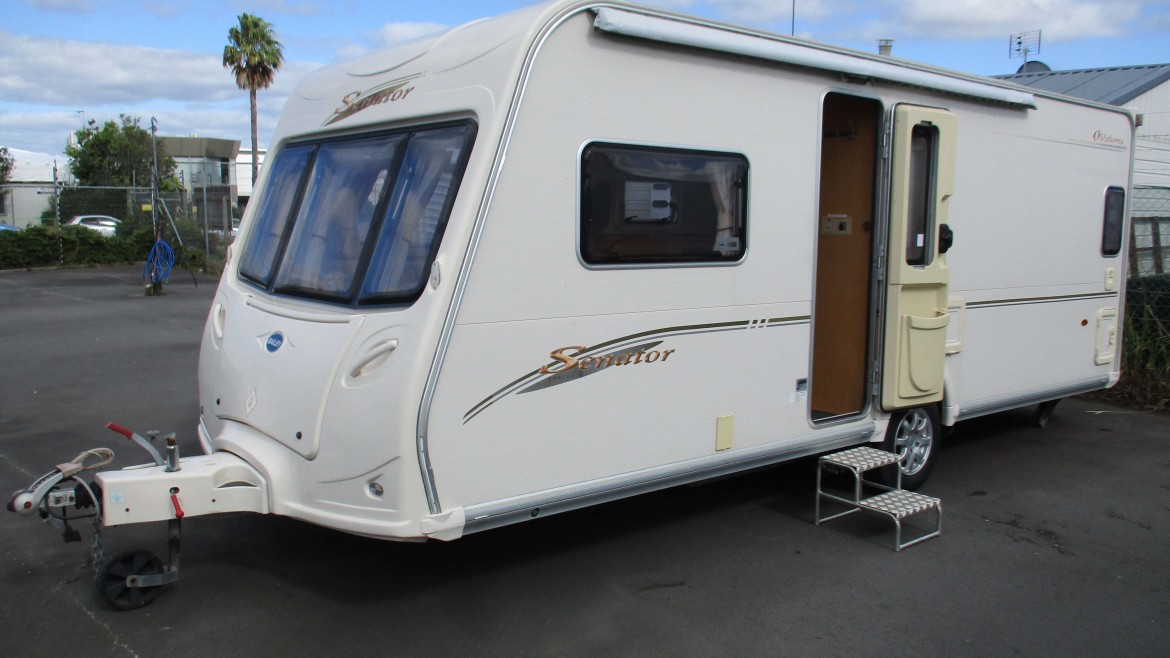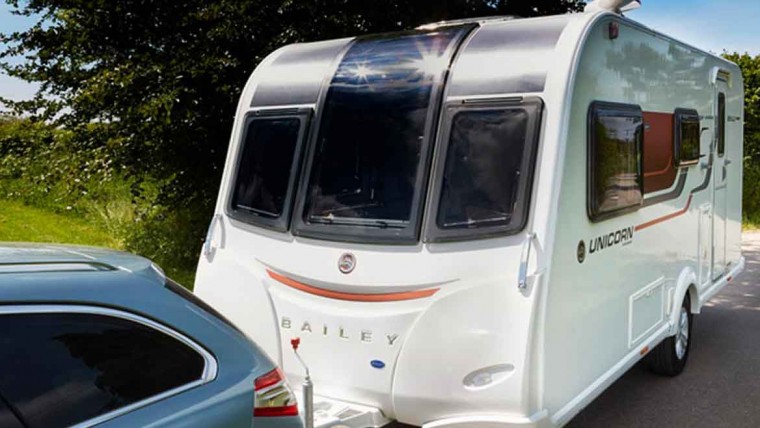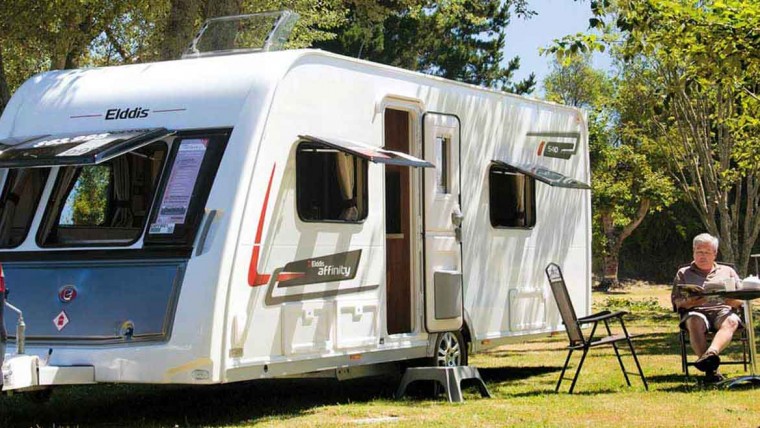You have put your clocks back, the mornings are getting darker and colder, and you have done your last trip in your caravan until Spring. So now that Winter is around the corner it is time to think about preparing your caravan for its Winter hibernation. Here are 5 important steps and tips to make sure your caravan will be ready for the next season.
1. Deep Clean Before Hibernation
After your last trip away before hibernating your caravan, give it a deep clean inside. Clean out the fridge (and just before you close up for the last time crack the door to leave it ajar, so the air inside doesn’t stagnate), vacuum, clean the bathrooms, either stand up away from the wall or remove all the cushions and upholstery, remove bedding and pillows and store them in a dry place. Don’t forget to remove any valuables as well. Also, leave your cupboards and internal doors ajar, this will help with natural airflow and reduce mildew build-up over the Winter. You can also include a couple of moisture absorber pails to help remove the moisture. Remember if you are going to clean the windows, these usually are not glass, but an acrylic plastic and these don’t react well to normal glass cleaners. Use specific acrylic cleaners for this. All the work you do now will help to bring your caravan out of hibernation in Spring.
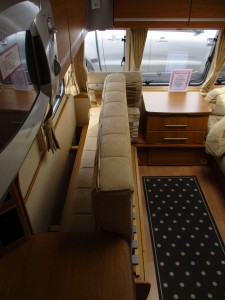
When it comes to cleaning, the exterior of your caravan needs as much, if not more, attention as the interior. You need to be careful doing your exterior clean, caravans are built differently from cars, and therefore you could damage your caravan by using the wrong methods or products. Avoid abrasive cleaners, caravans are usually made of thin aluminum and a layer of paint compared to cars being steel and at least four layers of paint. Therefore, use cleaners and polishes specifically designed for caravans. A a bucket of hot soapy water, or a decent truck wash, and a proper soft car wash brush to remove the dirt and debris is advised, then rinsed with tap water. It is important to remove all the dirt and debris from around any of your seals to help prevent leaks. Please use a ladder to reach your roof and never stand on the roof of your caravan. Make sure you never spray water directly at your vents either, this could get water inside units that will cause all sorts of problems in the future. Lastly never use a pressure washer to clean your caravan, while fine for your car, it can lead to damaging your caravan.
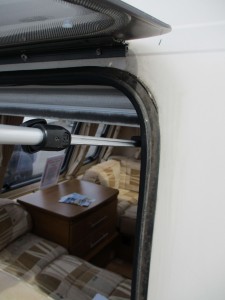
Lastly use a quality polish (not cutter based) to clean your paintwork and provide additional protection to your paintwork over the Winter period.
2. Inspect & Protect Bodywork
Once cleaned inspect the whole exterior of your caravan with your Mark I eyeball. This is the best time to repair any paint flaking, make sure that any screws are tight, rivets are replaced, and all your seals are fitted correctly and are not brittle. Inspect the seals of all your windows, hatches (including roof/skylights) and doors, this includes that they are dirt and debris free, clean, undamaged and lubricated. Then close them and lock them for Winter. Remember this is also the time to remove your gas cylinder and store them in a cool ventilated place for the Winter. Don’t forget to oil and grease any moving parts, this will also help prevent corrosion over the wet months. The more you do now to ensure your caravan’s weather tightness, the fewer surprises next season.
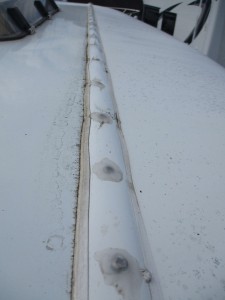
So, should you invest in a Winter cover? This will depend on where you are parking your caravan over the Winter period. If you have it tucked away under a tree, it is more advisable to cover the roof due to the increased risk of that green and black build upon the caravan from algae and moss. One of the bigger challenges is protecting the caravan from wind, and a caravan cover will move regardless of how tight you have tensioned it, resulting in rubbing the caravan’s surfaces. As mentioned above the windows are usually acrylic plastic and the abrasiveness of the cover material can cause scuff marks on the windows, so this should be taken into consideration. Lastly, most covers aren’t waterproof, so even if you cover the caravan, expect some level of moss/algae to penetrate the cover and build up over the Winter. One area you might still look at for a separate cover is the caravan’s braking system on the tow arm. This should help reduce corrosion of this important system over the Winter.
3. Drain Water Systems
We know water can be a caravan’s worst enemy, and any water that is left in your caravan’s water system (including the water heater) over the Winter period will stagnate and cause you issues when you are getting ready for the next season. While in New Zealand we are less likely to experience cold conditions that will freeze the water in the pipes causing them the rupture and then leak when the water melts, it is still advisable to empty your cold and hot water systems when you hibernate your caravan and leave the taps open during this period. Note that while gravity and pumps will help empty these systems, they might not completely flush all the water from the systems.
Do not forget that the toilet flush tank and pump also need to be drained. The flush tank is easy, this just needs the hose pulled out and drain down the toilet. But don’t forget the toilet flush pump, this will have water sitting in it also. If you do have freezing conditions over Winter, then it could be advisable to take the pump out for the Winter.
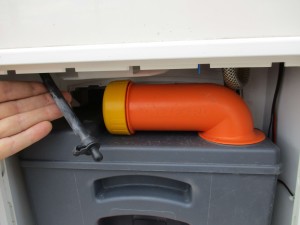
With your toilet cassette, first, ensure it is empty and clean. The next step is to ensure your cassette’s seal is lubricated for the Winter. As these seals are rubber, over the colder months if they are not lubricated, they can become rigid, and brittle and Winter will accelerate this decay. Keeping the seal lubricated will help the seal remain supple and malleable over the Winter and help its overall lifespan. There are several products on the market for this, or you can just use olive oil.
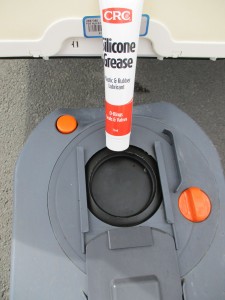
4. Remove Batteries & Isolate Solar Panels
Your power supply over Winter needs to be considered. If storing where there is an approved outdoor caravan supply, make sure your connections are dry before connecting them up. As for your leisure batteries, they need to be kept in good health above 12V to maintain their function, but this isn’t just charging them, they need to discharge too. Unless your battery is connected to your caravan’s alarm system the alternative is to remove the battery for the Winter and keep it charged at home (never leave a charging battery unattended, there is a fire risk). Also remove all other batteries (clocks, etc) as they could corrode over Winter and ruin the appliance.
If your caravan has solar panels, remember these will generate over the Winter months, just like summer as they work on UV rays and even on a cloudy and rainy day they will generate if they are exposed to these rays. If you are going to keep your battery charged, your solar panels may provide enough charge to do this, but if you aren’t going to want them to charge then ensure they are isolated at their main switch. Also remember if you use a caravan cover, this will block out the light, but may also scuff the panels, in a worst-case scenario break the panels, this is something to consider.
5. Tyres & Handbrake
Before we talk about tyres and handbrakes, the first point is to make sure your caravan is parked on a flat level surface for the Winter. This will also help prevent leaks as the caravan will be positioned, the way the manufacturer intended and reduce the chance of water building up.
As for the handbrake, we know this goes against the normal practice, leave the caravan handbrake off over the Winter. So, you must park your caravan on a flat and level surface, we can’t state this any stronger.
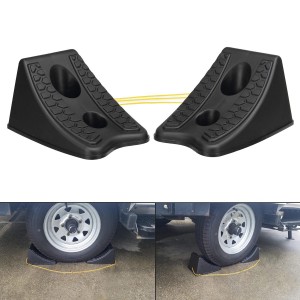
Then you must chock or wedge your wheels when in position, both front and back. You should also extend your corner steady stays to stabilise the caravan, and if fitted use a jockey wheel or caravan stand on the tow bar. But why leave the handbrake off? With the Winter conditions being wet and humid, corrosion builds up on unprotected metal surfaces, if your caravan handbrake is under tension, corrosion may effectively lock the brake system in place, including the brake drums.
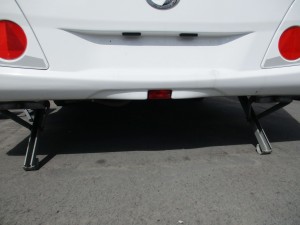
More damage can be done to tyres when they are parked for prolonged periods of time than when they are on the road. We have all heard of 18-wheeler truckers having to move their trucks to rotate the tyres, this is so that when parked up that the tyre does not square off and form flat spots. With the majority of your caravan’s weight through your axle(s) and tyres, there is a risk of a similar thing happening as the majority of the weight will be on a single spot on the tyre. Before storing your caravan, ensure the tyres are pumped up to pressure so they are in their most effective shape for the load. One way to prevent this is to jack up the caravan each month and rotate each wheel slightly to move that point around over the hibernation period. A product that can help with this is a Tyre Saver. These are curved platforms that increase the contact with the tyre and the surface, therefore, spreading the weight more evenly (they also can act as chocks). We would recommend a combination of tyre savers and wheel rotation.
Lastly don’t forget to secure your caravan. Hitch locks, wheel clamps and leg locks will help deter the honest people out there, but a motivated criminal can defect most security devices. So make sure what ever you use to secure your caravan meets the terms of your caravan insurance policy.
Conclusion
The key to putting your caravan into hibernation for the Winter period is the more effort you put into this closing down and shutting up the caravan at the end of the season, the less effort it will require to bring the caravan out in Spring for the next season.


